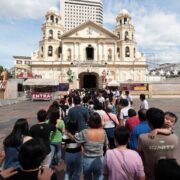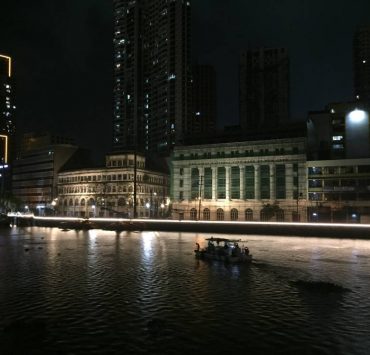The suppressed proof of Lipa

When I was turning 9, in February 1949, my dad asked me what I wanted for my birthday. I had all week to think about it. I was then living with my paternal grandparents, at 308 Park Ave., Pasay City, and picked up every Friday night to spend the weekend with my parents and my younger brother, Danny, and Frieda, our German shepherd, whose first loyalty was to Mom—look for either and you found both.
Obviously, I looked forward to weekends. Dad always made sure I had an enjoyable time. And delivered back to Pasay, I often wondered with a tinge of melancholy why Danny stayed with them and I didn’t. But it was only a momentary heartache that would quickly vanish as soon as I saw cousins Sylvia and Ninit, who also lived in Pasay.
At about that time there was news about an apparition of Our Lady in Lipa to the novice Teresita, a namesake of mine. Like other young girls educated by nuns, I had fleeting thoughts of becoming one.
I told Dad I wanted to go to Lipa for my birthday. People were already flocking to Lipa to witness the shower of rose petals with holy images in them. Dad was surprised, but visibly pleased.
Dad enjoyed driving out of town. We left the apartment, on M. Natividad Street, in Quiapo, headed early—Lipa was not so close as it has now become, with the new highway shortcuts. It must have been a Saturday or a Sunday. There were many other visitors from out of town.
We arrived in time for Mass, walked around some, had a bite and quickly returned to church, lest we miss the miracle. Nothing; we were not favored with the shower of petals. We didn’t even see Sister Teresita.
Miracle
Driving around the immediate area like tourists, with Dad slightly disappointed for me, we started back. I don’t recall exactly how long we had been on the road, but we hit something that caused Dad to lose control.
My next conscious recollection was coming out of some bushes in a daze and hearing a strange whirring sound. It was from a dusty haze some distance from me. Our car had overturned and settled on its roof, looking like a warped aluminum soft drink can, tires in the air still running making a metallic sound. I didn’t notice if the car doors had been flung open.
But they must have been, because we all had been thrown out some distance from the wreck.I heard Mom calling out our names, and we soon enough found one another, still in a daze but feeling okay, all things considered. A Good Samaritan appeared and offered to take us to the hospital. I recall him saying that, from the look of the car, he didn’t think anyone inside the car could have survived.
We all promptly attributed the miracle to Our Lady of Lipa.
Final opus
All came back to me inspired by Floy Quintos’ play, “Grace.” In fact, it’s all very uncanny that he had taken it upon himself to bring all back to those mysterious and unfortunate events in Lipa before he himself left us for good. They are presented so masterfully and objectively as only befits a final opus of its class.
Floy, once again, as with his “Reconciliation Dinner,” set in present-day political environment, has created such catchy and intelligent dialogue that even from the Batangueña lips of a secondary and comic character, it sounds just perfect.
The cast is excellent, but the tall and imposing figure of Leo Rialp is bound to stand out in his portrayal of the papal nuncio, His Excellency Egidio Vagnozzi. He also happens to be central to the message.
Our scarcely outgrown colonial mentality of the era, around the beginning of our contemporary history—the late ’40s and the ’50s—is hinted at as one of the reasons even nuns, priests, bishops were easily intimidated by a white papal nuncio, who threatened to excommunicate them unless they denied the miracle in writing, not for any reasons other than political—about something, never mind if true, that could cause the flock confusion and overreaction. This was lowly Lipa, you see, not Lourdes. And Sister Teresita was Filipino.
She was thus debased as a delusional young nun surrounded by opportunistic superiors who had invented the whole thing to raise money to build the Cathedral of Lipa. That was, in any case, the Church’s official conclusion. Sister Teresita thus lived the rest of her fairly long life banished from the convent she loved and died in obscurity, unredeemed—officially.
But undeniable realities in the future would not deny her. She said that Our Lady had warned her she would suffer, and she evidently obediently resigned herself to that fate. Still invoking her Lady’s word, she asked that we habitually pray the rosary, and warned us about China’s covetous plots—three quarters of a century before.
Meanwhile, the Church itself continues to be plunged into turmoil for its inability to correct its inconsistencies and reform itself.
Quintos himself seems to me to have lived in God’s perfect time—to reawaken us up precisely at this time to the suppressed message of Our Lady Mediatrix of All Grace.


















